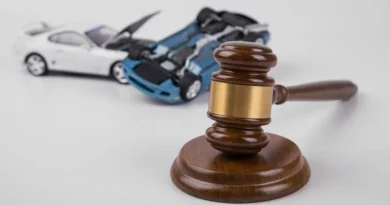Reclaiming Your Comfort Behind the Wheel: Guidance After an Incident
You’ve always been a confident driver, but after that incident, it’s like you’ve forgotten how to turn the key. Don’t beat yourself up. It’s normal to feel shaken.
This guide’s here to help you reclaim your comfort behind the wheel. We’ll walk you through understanding your feelings, provide practical steps, and even suggest professional lessons.
You’ll also learn relaxation techniques to ease your mind. So buckle up; it’s time to regain your confidence.
Understanding Your Post-Incident Emotions
Understanding your post-incident emotions, an integral aspect of your recovery, can help you regain control and confidence on the road. Don’t underestimate the power emotions wield; they can either keep you stuck or propel you forward. It’s natural to feel a myriad of emotions after an incident: fear, anger, guilt, or even relief that it wasn’t worse. These feelings are valid, and it’s important to acknowledge them.
You might find yourself replaying the incident in your mind, causing a surge of anxiety each time. This is a common reaction, known as post-traumatic stress. You’re not alone in this. It’s crucial to recognize these feelings and not push them away.
It’s also okay to seek professional help. A therapist or counselor familiar with post-traumatic stress can provide valuable tools to cope and heal.
Practical Steps to Regain Confidence
After you’ve acknowledged and managed your post-incident emotions, there are several practical steps you can take to further rebuild your confidence on the road.
First, consider seeking professional help. A driving instructor can provide you with targeted advice and techniques to enhance your driving skills and increase your comfort level. They’ll guide you while you become familiar with the road again, at a pace that suits you.
Next, try to gradually face your fears. Start with short, familiar routes during less busy times. As you regain your confidence, gradually extend your driving range and the complexity of the situations you tackle.
It’s also helpful to visualize success. Picture yourself navigating the roads with ease and confidence. This type of positive thinking can significantly boost your self-assurance.
Lastly, take care of your physical health. Regular exercise and a balanced diet can help reduce anxiety levels, improving your overall mood and focus.
Utilizing Professional Driving Lessons
Utilizing professional driving lessons, especially after an auto accident, can be incredibly helpful for regaining confidence on the road. After an incident, many drivers often find themselves feeling anxious and unsure about their driving abilities. That’s where professional instructors come in, and it’s a step forward that even auto accident attorneys Philadelphia would recommend. These instructors are trained to address your fears and assist you in rebuilding your confidence within a safe and controlled environment.
These driving lessons offer more than just an understanding of the rules of the road. They are a comprehensive approach to improving your ability to handle unexpected situations, enhancing your reaction times, and refining your spatial awareness. Additionally, you’ll gain valuable insight into defensive driving techniques that can help prevent future accidents. With the right instructor, you’ll feel more prepared, in control, and ultimately, more confident behind the wheel.
By enrolling in a professional driving course, you’re not taking a step back; you’re taking a proactive step forward. It’s all about self-improvement and becoming a safer driver, not only for your own benefit but also for the safety of everyone else on the road. Remember, confidence is a byproduct of competence, and professional driving lessons are a fantastic way to cultivate both. So, these lessons are a wise investment in your road safety and personal development.
Incorporating mindfulness and relaxation techniques
In addition to professional lessons, incorporating mindfulness and relaxation techniques into your daily driving routine can provide another layer of comfort and ease behind the wheel. It’s understandable that you might feel tense or anxious after an incident. But, with consistent practice, these techniques can help you regain your confidence and composure.
Consider incorporating these techniques into your routine:
- Mindful breathing: Focus on your breath, inhaling and exhaling slowly. This can help you stay calm and centered.
- Progressive muscle relaxation: Tense and then release each muscle group in your body, starting from your toes up to your head. You’ll feel a wave of relaxation wash over you.
- Visualization: Imagine a peaceful and safe driving experience. This can help reduce anxiety and stress.
- Positive affirmations: Tell yourself that you’re a capable and confident driver. This can boost your morale and self-belief.
- Yoga or stretching: Before driving, do some light stretches or yoga to relieve tension in your body.
Gradual Exposure: The Key to Success
While practicing mindfulness and relaxation techniques is beneficial, taking one small step at a time towards familiarizing yourself with driving again is another essential part of your recovery journey. This process, known as gradual exposure, is a proven method for overcoming fear and anxiety.
Don’t feel like you need to jump straight back into the driver’s seat on a busy highway. Start somewhere you’re comfortable, perhaps on a quiet residential street or an empty parking lot. As your confidence grows, you can gradually increase the complexity of your driving environment.
Consider having a supportive friend or family member in the car with you initially. They’ll be there not only for emotional support but also to help you navigate and provide constructive feedback.
Remember, it’s okay to have setbacks. They’re a normal part of any recovery journey. What’s most important is that you’re making progress, no matter how small.
Gradual exposure is about taking it one step at a time, and before you know it, you’ll be back behind the wheel, feeling more confident and comfortable than ever. It’s all about patience, practice, and persistence. You’ve got this.
Conclusion
In the end, it’s like learning to ride a bike all over again. Navigating your emotions, adopting practical strategies, enlisting professional help, and embracing mindfulness can smooth the road ahead.
Remember, don’t rush. Take it slow. Each journey starts with a single, tentative step. You’re in control. You’re not alone.
The open road awaits, ready to welcome you back into its embrace. You have the power to reclaim your comfort behind the wheel.




